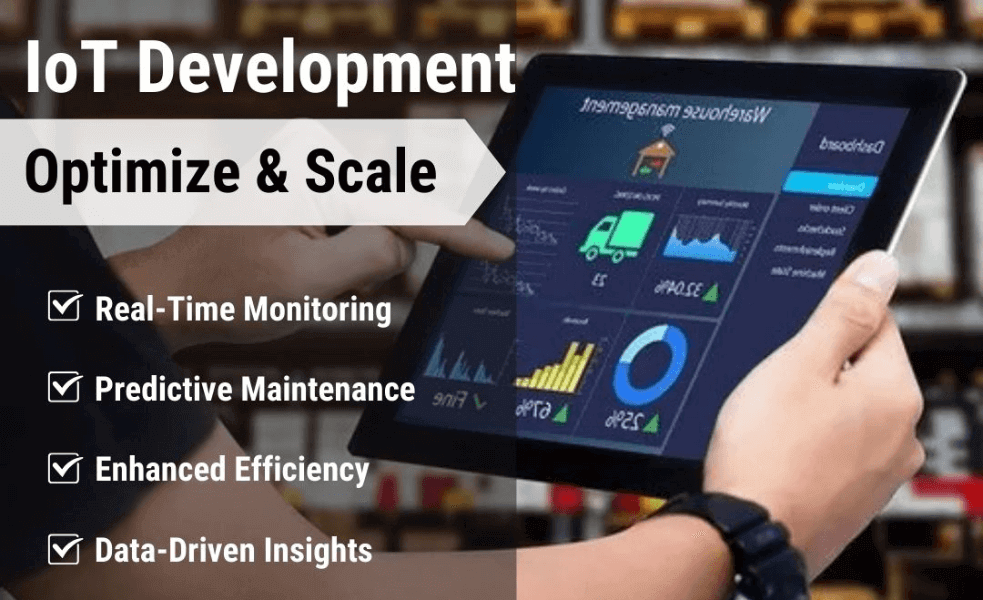Manufacturing has always been an industry driven by efficiency, precision, and scale. In the past, success was determined by a company’s ability to produce at high volumes, streamline its processes, and keep costs down. But the landscape is changing rapidly.
Today, data is the new currency of success. It’s no longer enough to simply produce large quantities of goods. The most successful manufacturers are those that harness data—real-time data, predictive analytics, and cloud-based solutions—to drive smarter decision-making, improve operations, and optimize every aspect of the manufacturing process.
This shift is transforming how manufacturers operate and interact with their customers. By leveraging data analytics and cloud computing, manufacturers are gaining unprecedented control over their operations, making data-driven decisions that were once considered impossible.
The result? Increased efficiency, reduced costs, better customer experiences, and a stronger competitive edge. But how can manufacturers fully leverage these tools? And what role do cloud computing and data analytics play in this transformation?
Let’s take a closer look at how these two powerful technologies are shaping the future of manufacturing.

Data Analytics: The Heartbeat of Smarter Manufacturing
At the core of smart manufacturing lies data analytics. Data analytics is the process of examining raw data to uncover hidden patterns, trends, and insights that can drive decision-making. This is where manufacturing companies can gain a competitive edge by turning vast amounts of data into actionable intelligence.
Why Data Analytics Matters in Manufacturing
Manufacturers have access to vast amounts of data: everything from production rates, supply chain movements, quality control metrics, and machine performance. The challenge lies in how to turn that raw data into something meaningful that drives improvements across the business.
This is where data analytics comes in. By analyzing the data you’re already collecting, you can identify inefficiencies, predict potential problems, and optimize your entire production process. The power of data analytics lies in its ability to transform your manufacturing operations from reactive to proactive.
Predictive Analytics: The Power of Forecasting
One of the most powerful applications of data analytics in manufacturing is predictive analytics. Predictive analytics uses historical data to make predictions about future outcomes. In manufacturing, this can have a profound impact on efficiency and cost savings. For example, predictive analytics can:
 Forecast equipment failure: By analyzing historical data on machine performance, you can predict when a piece of equipment is likely to fail. This allows you to perform preventive maintenance, reducing downtime and extending the life of your machinery.
Forecast equipment failure: By analyzing historical data on machine performance, you can predict when a piece of equipment is likely to fail. This allows you to perform preventive maintenance, reducing downtime and extending the life of your machinery. Optimize production schedules: By analyzing production data, you can predict which periods will be most productive and adjust production schedules accordingly, maximizing output during peak times and preventing overproduction during slower periods.
Optimize production schedules: By analyzing production data, you can predict which periods will be most productive and adjust production schedules accordingly, maximizing output during peak times and preventing overproduction during slower periods. Improve quality control: By analyzing product defect data, you can identify patterns and adjust production processes to prevent defects before they occur, improving product quality and customer satisfaction.
Improve quality control: By analyzing product defect data, you can identify patterns and adjust production processes to prevent defects before they occur, improving product quality and customer satisfaction.By implementing predictive analytics, manufacturers can shift from a reactive approach (fixing problems as they arise) to a proactive approach (anticipating problems and addressing them before they impact operations). This not only reduces costs but also boosts overall operational efficiency.
The Benefits of Data Analytics for Manufacturing:
 Cost Savings: Predictive maintenance and optimization of production schedules reduce both downtime and waste.
Cost Savings: Predictive maintenance and optimization of production schedules reduce both downtime and waste. Improved Quality: Continuous data analysis helps identify quality issues early, resulting in fewer defects and higher product quality.
Improved Quality: Continuous data analysis helps identify quality issues early, resulting in fewer defects and higher product quality. Increased Efficiency: Insights from data allow for process optimization, reducing bottlenecks and improving throughput.
Increased Efficiency: Insights from data allow for process optimization, reducing bottlenecks and improving throughput. Better Decision-Making: Access to data-driven insights empowers decision-makers with real-time information, leading to smarter business strategies.
Better Decision-Making: Access to data-driven insights empowers decision-makers with real-time information, leading to smarter business strategies.Data analytics allows manufacturers to make smarter decisions—based not on guesswork, but on facts and insights. This is the essence of becoming a data-driven business.

Cloud Computing: The Engine Behind Data Accessibility and Collaboration
While data analytics provides the insights, it’s cloud computing that enables manufacturers to access, store, and share this data in real-time across the entire organization. Cloud computing is the backbone that supports the digital transformation of manufacturing operations by offering flexible, scalable, and secure data storage and access.
What is Cloud Computing in Manufacturing?
Cloud computing refers to the delivery of computing services—such as servers, storage, databases, networking, software, and analytics—over the internet. This on-demand model allows manufacturers to access powerful computing resources without the need to maintain costly and complex on-premise infrastructure.
Cloud solutions have become increasingly popular in manufacturing due to their ability to store large amounts of data, provide scalability, and allow for real-time access to information from anywhere in the world. For manufacturers, this means that data from production lines, supply chains, and sales teams can be accessed, analyzed, and shared across multiple departments and locations—anytime, anywhere.
How Cloud Computing Supports Data Analytics
Data analytics and cloud computing go hand-in-hand. Cloud platforms provide the infrastructure needed to store and process the enormous volumes of data that manufacturing operations generate. They also enable the real-time processing of data, allowing manufacturers to make quick decisions based on the latest information.
In a typical manufacturing environment, data is generated from a variety of sources: IoT devices, production machines, supply chain data, and employee performance metrics. With cloud computing, all this data is stored in a centralized system that can be accessed by employees at any level of the organization.
Here’s how cloud computing enhances the power of data analytics:
 Real-Time Data Access: Cloud computing enables real-time access to operational data, which means that data analytics can be performed instantly, without delays.
Real-Time Data Access: Cloud computing enables real-time access to operational data, which means that data analytics can be performed instantly, without delays. Collaboration Across Teams: Cloud platforms allow manufacturing teams to access and share data, fostering collaboration between departments such as production, quality control, and logistics. This ensures that all teams are on the same page and can make data-driven decisions together.
Collaboration Across Teams: Cloud platforms allow manufacturing teams to access and share data, fostering collaboration between departments such as production, quality control, and logistics. This ensures that all teams are on the same page and can make data-driven decisions together. Scalability: As manufacturing operations grow, so does the volume of data. Cloud solutions allow businesses to scale their data storage and processing power without the need for costly on-premise infrastructure.
Scalability: As manufacturing operations grow, so does the volume of data. Cloud solutions allow businesses to scale their data storage and processing power without the need for costly on-premise infrastructure.By leveraging cloud computing, manufacturers can ensure that their data is always accessible, secure, and ready for analysis—no matter where they are or how large their operations become.
Benefits of Cloud Computing for Manufacturers:
 Cost Efficiency: By eliminating the need for expensive physical infrastructure, manufacturers can save money on hardware and maintenance.
Cost Efficiency: By eliminating the need for expensive physical infrastructure, manufacturers can save money on hardware and maintenance. Scalability: Cloud computing provides flexibility for businesses to scale their data storage and computing power as their operations grow.
Scalability: Cloud computing provides flexibility for businesses to scale their data storage and computing power as their operations grow. Real-Time Collaboration: Cloud-based platforms enable seamless collaboration between teams and departments, increasing productivity and aligning business goals.
Real-Time Collaboration: Cloud-based platforms enable seamless collaboration between teams and departments, increasing productivity and aligning business goals. Security: Modern cloud platforms offer high levels of data encryption and security protocols, ensuring that sensitive manufacturing data remains protected.
Security: Modern cloud platforms offer high levels of data encryption and security protocols, ensuring that sensitive manufacturing data remains protected.Cloud computing is the enabler that allows manufacturers to harness the full potential of their data analytics efforts, making it an essential component of the digital transformation journey.

The Strategic Advantage of Data Analytics and Cloud Computing in Manufacturing
At the heart of every digital transformation is the ability to make smarter decisions. With data analytics and cloud computing, manufacturers are gaining the ability to:
 Optimize Operations: By analyzing data from production lines, supply chains, and quality control, manufacturers can eliminate inefficiencies, streamline workflows, and reduce costs.
Optimize Operations: By analyzing data from production lines, supply chains, and quality control, manufacturers can eliminate inefficiencies, streamline workflows, and reduce costs. Predict and Prevent: Predictive analytics allows manufacturers to anticipate potential issues (like equipment failure or supply chain disruptions) and take action to prevent them, minimizing downtime and improving reliability.
Predict and Prevent: Predictive analytics allows manufacturers to anticipate potential issues (like equipment failure or supply chain disruptions) and take action to prevent them, minimizing downtime and improving reliability. Improve Customer Experiences: Real-time access to data allows manufacturers to adjust their production schedules to meet demand, improve product quality, and deliver on customer expectations with greater accuracy.
Improve Customer Experiences: Real-time access to data allows manufacturers to adjust their production schedules to meet demand, improve product quality, and deliver on customer expectations with greater accuracy. Foster Innovation: By analyzing operational data, manufacturers can uncover insights that help drive new product development and innovate in response to changing market needs.
Foster Innovation: By analyzing operational data, manufacturers can uncover insights that help drive new product development and innovate in response to changing market needs.The combination of data analytics and cloud computing provides manufacturers with a strategic advantage. It empowers them to make more informed, proactive decisions, leading to increased efficiency, reduced waste, and a competitive edge in the marketplace.

Getting Started: Practical Steps for Manufacturers
If you’re ready to start leveraging the power of data analytics and cloud computing, here are some practical steps to help you get started:
 1. Start with IoT Sensors: Begin by collecting data from your equipment and production lines through IoT sensors. These sensors will provide real-time data that you can use for analytics.
1. Start with IoT Sensors: Begin by collecting data from your equipment and production lines through IoT sensors. These sensors will provide real-time data that you can use for analytics. Choose the Right Cloud Platform: Select a cloud provider that offers the scalability, security, and data processing capabilities you need to store and analyze your data.
Choose the Right Cloud Platform: Select a cloud provider that offers the scalability, security, and data processing capabilities you need to store and analyze your data. Implement Predictive Analytics: Begin using predictive analytics tools to forecast equipment failures, production bottlenecks, and other potential issues.
Implement Predictive Analytics: Begin using predictive analytics tools to forecast equipment failures, production bottlenecks, and other potential issues. Integrate Systems: Ensure that your data from different sources (production, logistics, quality control) is integrated into a centralized cloud-based platform.
Integrate Systems: Ensure that your data from different sources (production, logistics, quality control) is integrated into a centralized cloud-based platform. Train Your Team: Ensure your employees are trained to use data analytics tools and can interpret insights to make data-driven decisions.
Train Your Team: Ensure your employees are trained to use data analytics tools and can interpret insights to make data-driven decisions.Embrace Data to Transform Your Manufacturing Operations
Manufacturers who embrace data analytics and cloud computing will have a significant competitive advantage in the rapidly changing landscape. These technologies not only provide operational insights but also enable smarter decision-making, greater efficiency, and more profitable business outcomes.
The future of manufacturing is here, and it’s data-driven. Manufacturers who act now and leverage these powerful tools will unlock new levels of success, staying ahead of the curve and positioning themselves as leaders in their industry.
Now is the time to embrace data—and watch your manufacturing operations thrive.



